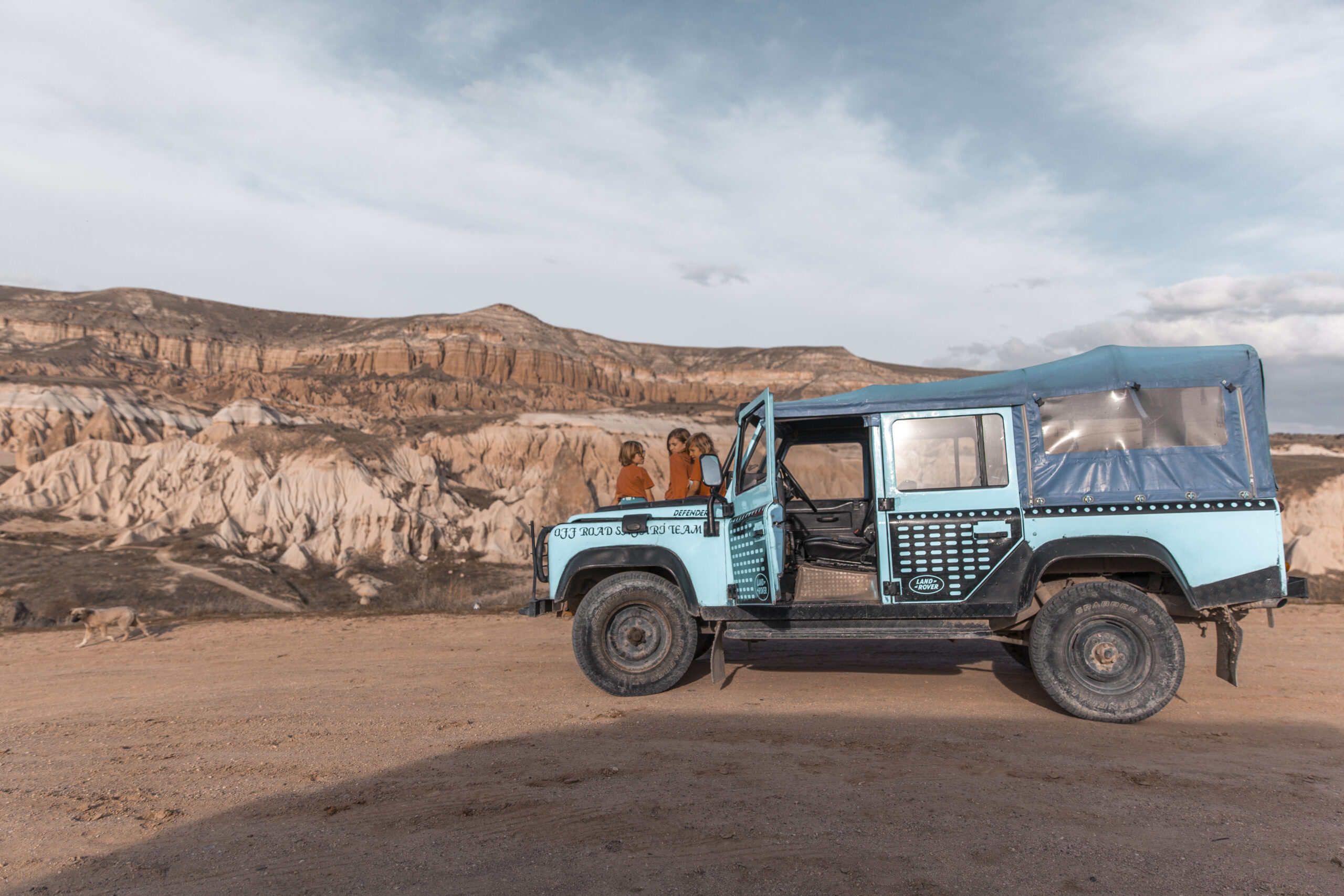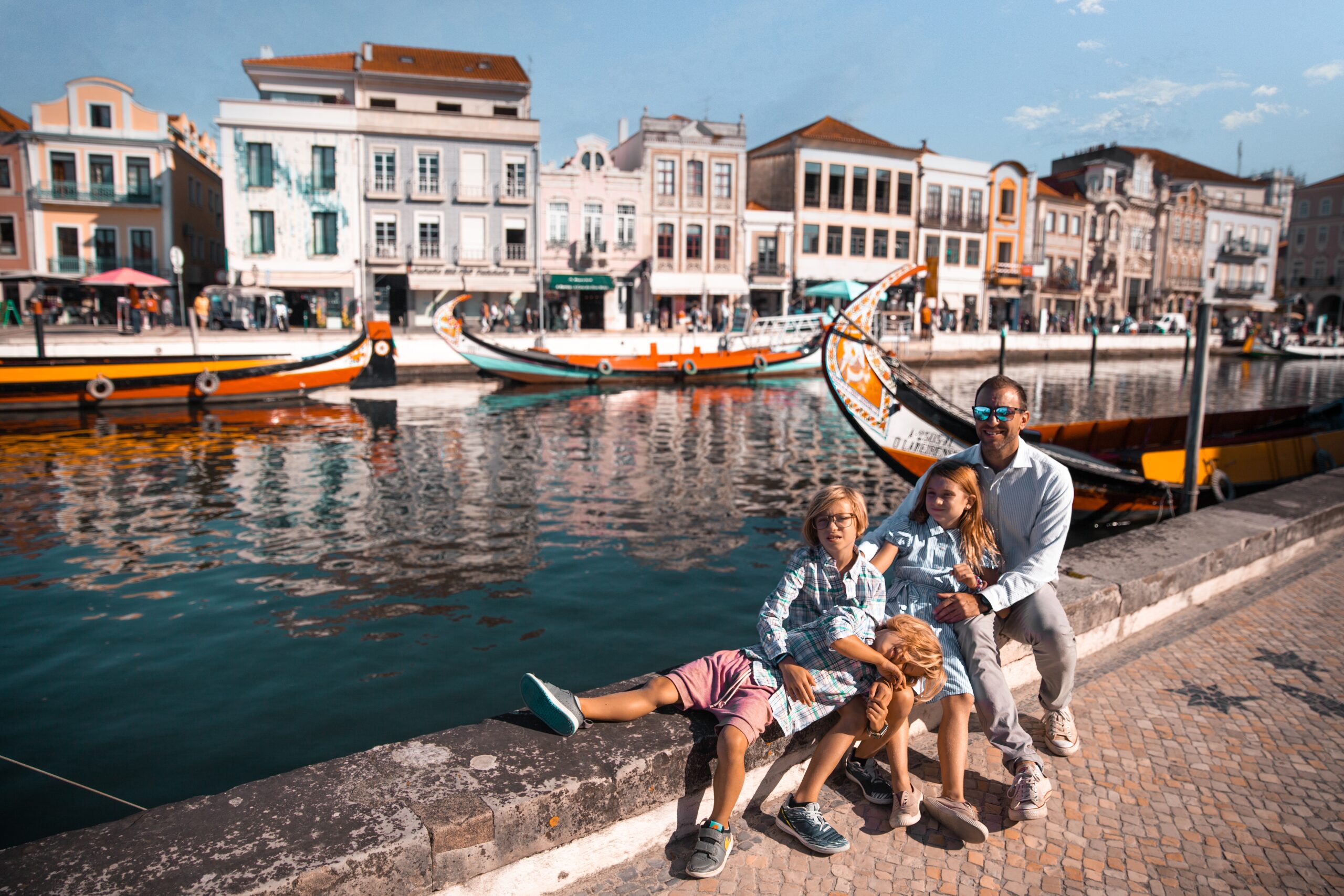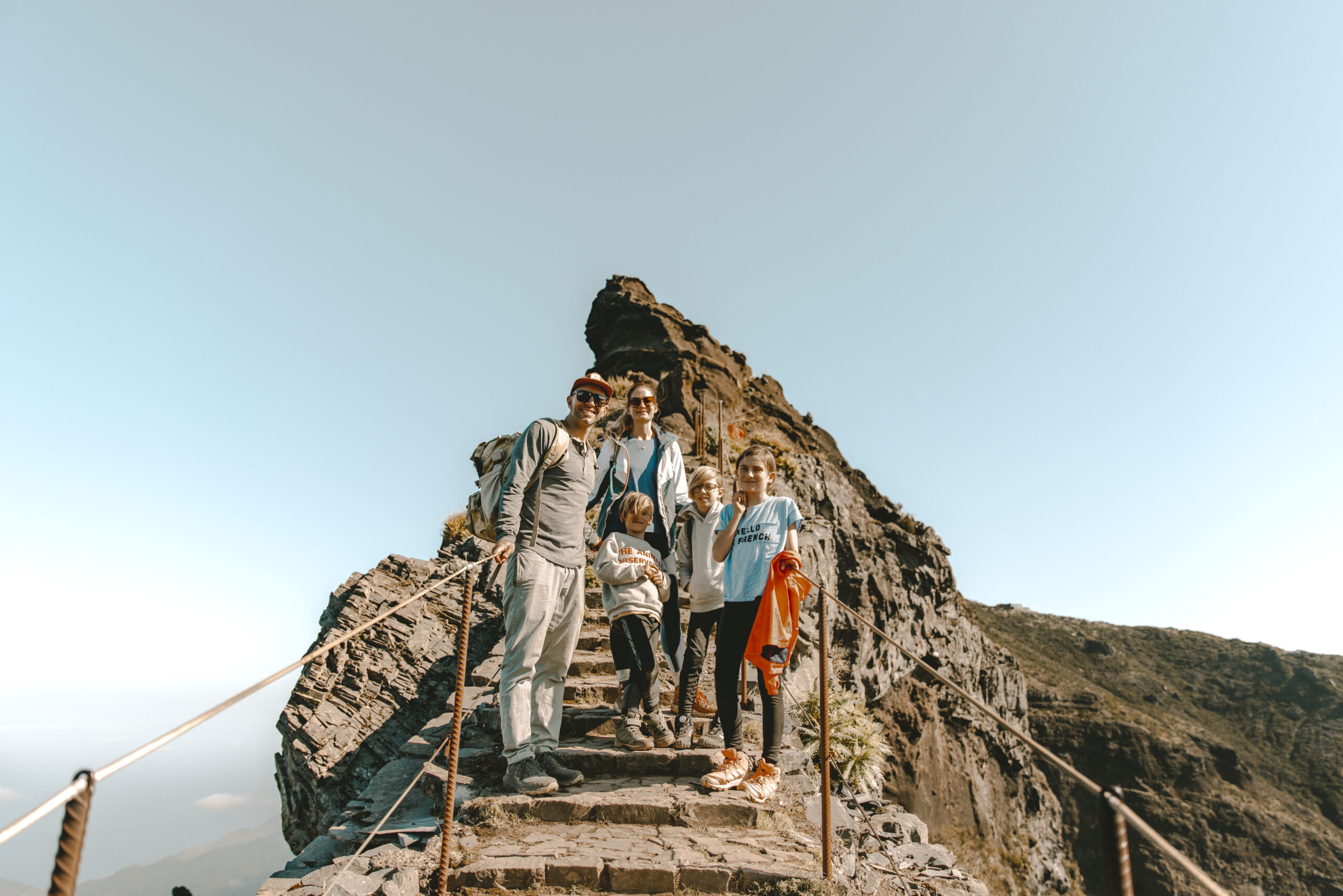20 Things to Know Before You Go to…Portugal
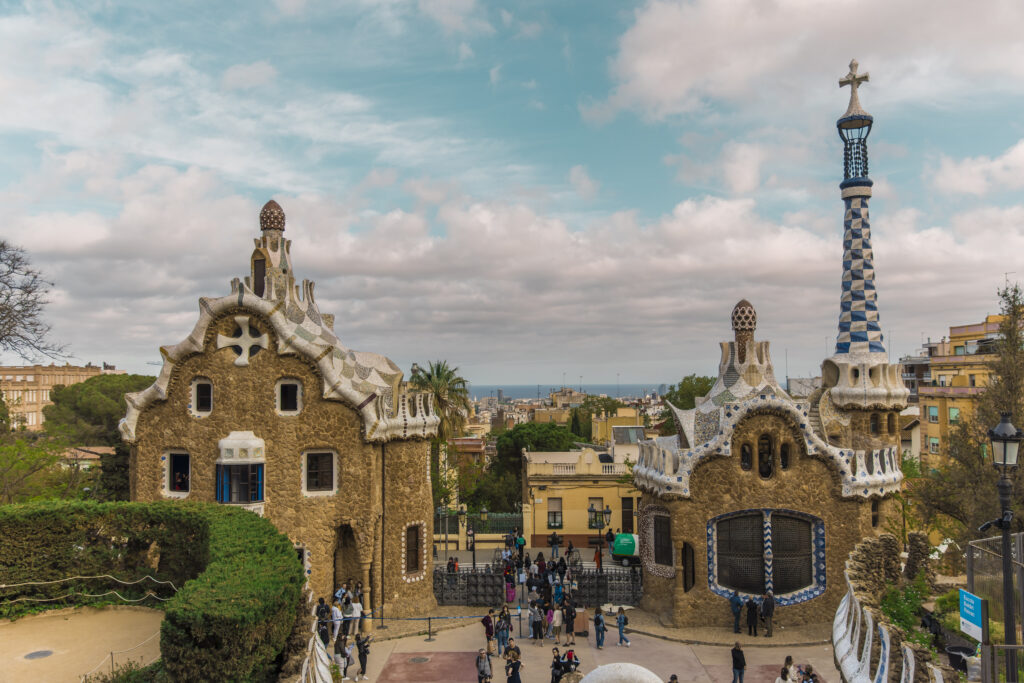
20 Things to Know Before You Go to… portugal Stuff you should definitely know. Like, definitely. Meal Time Portuguese is not Spanish Coffee Culture Pasteis de Nata Seafood is King Wine is Cheap Tipping Beaches Lisbon Azulejos Fado Trains Siesta Bifanas Cork The Algarve English Sardines Sintra Saudade 1.MEAL TIMES ARE LATE Lunch at 2 PM, dinner at 8 PM or later. Adjust your stomach accordingly. Strangely, when coming from Spain, meal times seem early here. 2. PORTUGUESE IS NOT SPANISH Learn a few basic phrases. “Obrigado/a” (thank you) goes a long way. Also, in our experience, people in Portugal would MUCH rather speak to you in English, rather than Spanish, if given the chance. 3. COFFEE CULTURE IS SERIOUS “Um café” will get you a shot of espresso. Specify if you want something larger. Unlike Italy, you can order an afternoon Cappuccino should your heart desire it. 4. PASTÉIS DE NATA ARE ADDICTIVE These custard tarts are a national treasure. Try them fresh from the oven. Not for everyone (i.e. me) but for most. 5. SEAFOOD IS KING Bacalhau (salted cod) appears in countless dishes. Give it a chance. 6. WINE IS CHEAP AND EXCELLENT Don’t just stick to Port. Try Vinho Verde or a Douro red. In fact, when and why would you drink Port? For a special occasion desert or in Porto, that’s all I can think of. 7. TIPPING ISN’T MANDATORY In fact, only in one restaurant did they try to force us into a tip. Remember, no one really tips in Europe. The servers get paid a living wage. Don’t ruin this. 8. BEACHES HAVE PERSONALITY From the wild Algarve to the surfing mecca of Nazaré, choose wisely. FYI – all the water is cold, year round. All of it. Just adjust your expectations. 9. LISBON ISN’T FLAt Pack comfortable shoes. Those picturesque hills are steeper than they look. You can get a taxi up to the castle (but it’s more fun to walk). 10. AZULEJOS ARE EVERYWHERE These decorative tiles are part of Portugal’s soul. Look up and around. It’s what brings the real beauty to the city in my opinion. 11. FADO IS HAUNTINGLY BEAUTIFUL Experience this traditional music in Lisbon or Coimbra. It’s unforgettable. 12. TRAINS ARE A GOOD OPTION Comfortable and often scenic, especially the Porto to Douro Valley route. 13. SIESTA ISN’T A THING Unlike Spain, most shops stay open through the afternoon. As someone who lives in Spain, can I get a “hell yeah”? I love this. 14. BIFANAS ARE THE PERFECT SNACK These simple pork sandwiches are a local favorite. Great with a cold beer. 15. CORK IS MORE THAN BOTTLE STOPPERS You’ll find cork products everywhere, from bags to shoes. I honestly don’t know who shops in these places, but more power to you. 16. THE ALGARVE ISN’T THE ONLY BEACH Try the less crowded Costa Vicentina or the islands of the Azores. 17. ENGLISH IS WIDELY SPOKEN But locals appreciate any attempt at Portuguese. 18. SARDINES ARE SEASONAL Fresh ones are typically available June through October. 19. SINTRA IS MAGICAL BUT CROWDED Go early or consider staying overnight to beat the day-trippers. You should also consider hiring a driver as it’s crazy driving up in there. 20. “SAUDADE” IS UNTRANSLATABLE This uniquely Portuguese concept of nostalgic longing embodies the culture. Remember, Portugal is more than just Lisbon and Porto. Explore smaller towns, embrace the relaxed pace of life, and don’t rush your meals. Learn to love seafood in all its forms, from grilled sardines to percebes (goose barnacles). And while the country is relatively small, each region has its own distinct character. Oh, and never confuse Portugal with Spain – it’s a quick way to offend locals. Boa viagem!
The Backroads of Croatia
The Backroads of.. Croatia The less-explored part of a beautiful country Istria Countryside Cetina Islands Croatia is a beautiful country with stunning coastlines along the Adriatic Sea, medieval walled cities, Roman ruins, and charming villages. While the popular tourist destinations like Dubrovnik, Split and Plitvice Lakes National Park are definitely worth visiting, some of the most interesting and authentic experiences can be found by getting off the beaten path and exploring the backroads of Croatia. This allows you to discover little-known towns, incredible natural scenery, wine regions, and interact with locals going about their traditional way of life. Let this be your guide to the best backroads and hidden gems that Croatia has to offer. Istria – The “Little Tuscany” of Croatia Istria is a heart-shaped peninsula at the westernmost point of Croatia, just across the Gulf of Trieste from Italy. The influence of its Venetian rule from the 13th-18th centuries gives Istria a distinctly Italian flavor in its architecture, cuisine, and culture. Wandering the backroads of Istria’s hilltop villages and coastline, you’ll feel worlds away from the conventional highlights of Croatia. Motovun Perched atop a hill at 277 meters, Motovun is one of the most scenic towns in Istria. The town’s medieval walls, cobblestone streets, and Romanesque houses make you feel like you’ve stepped back in time. Hike or take the road train up to the center, and reward yourself with nibbles and robust Teran wine at a konoba (traditional restaurant). Then walk along the fragrant truffle paths surrounding the town, as Motovun is a prime spot for white truffle hunting. Grožnjan Art lovers should make their way to the “Town of Artists” Grožnjan, just 10km from Motovun. This diminutive hilltop settlement has been revived as a colony for artists, musicians and photographers from around the world, with galleries and cultural events throughout the year. Wander the steep cobblestone alleys, appreciate the artist’s workshops and vibrant murals, and settle in for live music at one of the bars or cafes. Inland Istria Wine Routes Some of Croatia’s most celebrated wines like the bold red Teran and dry whites like Malvasia are produced in Istria’s interior valleys and rolling hills. Take the backroads to explore the villages and family-run vineyards along routes like the Parenzana Trail (following an old railway line), Vina Kras, and the Momjan Muscat Trail. Don’t miss tastings at acclaimed producers like Kozlovic and Kabola. Rovijn One of the most enchanting towns along Istria’s coast is Rovinj, with its church steeple towers and pastel-colored homes spilling down to the Adriatic. This is a Rick Steves favorite. Make sure to wander the narrow cobbled streets of the old town and harbor. Climb up to the Church of St. Euphemia or take a boat excursion to one of the nearby islands. Rovinj offers plentiful galleries, cafes, shops and a lively fishing culture that has remained authentic. Pula For a dose of history, head to Pula which has one of the best preserved Roman amphitheaters in the world. In addition to the impressive arena that once hosted gladiator games, Pula’s Roman ruins include the Arch of the Sergii and Temple of Augustus. Explore the backstreets of the old town as well as the seafront promenade and colorful row of Austro-Hungarian villas along the coast. Continental Croatia’s Countryside While the Croatian coast gets most of the attention, the rural interior of continental Croatia has a slower pace and Old World feel that warrants exploration, especially for food and wine lovers. Szirmia Located in northeastern Croatia near the Hungarian border, the Slavonia region and its fertile lowlands are known across the country for viniculture and delicious smoked and cured meat products like kulen (a paprika-spiced pork sausage). Osijek is the largest city and a great base to tour the villages and farms in the area, like Lug and Čakovci which have traditional homes, vineyards, and restaurants highlighting Slavonian cuisine. Lika/Plitvice Region The inland area known as Lika sits just south of Plitvice Lakes National Park and makes a nice detour from that popular park. Drive the scenic backroads through the villages and farmlands, stopping in places like Sertić Žleb in Kuterevo to pick up homemade cheeses and cured meat products. The village of Rastoke sits along cascades of the Slunjčica River and is particularly charming with its waterfalls and mills. Zagorje Known for its iconic “prickly” houses adorned with intricate decorative woodcarvings, the villages of Hrvatsko Zagorje are like an open-air ethnographic museum for Croatian folk traditions. Drive from town to town, stopping at homesteads in places like Kumrovec (birthplace of Tito), Marija Bistrica (Croatia’s biggest pilgrimage site), and Gornja Stubica to walk among the preserved architecture and buy handicrafts from locals keeping the customs alive. Cetina Region For adventurous travelers, the area around the Cetina River offers a dramatic landscape of canyons, waterfalls, caves, forests and traditional villages. This region in the Dalmatian hinterland is nicknamed the “Eye of Croatia” for its natural beauty and wealth of outdoor activities like hiking, rafting, canyoning and rock climbing. Explore places like Vrlik and Vrlika where you can experience rural life and hospitality, as well as easy access to natural attractions along the Cetina like Gubavica Waterfall and the Cetina Gorge. Coastal Backroads & Islands While Dubrovnik, Split and Hvar see huge crowds during high season, some of the small Adriatic islands and stretches of coastline dotted with seaside hamlets offer a much quieter, authentic atmosphere for visiting Croatia. Lastovo Archipelago Directly south of Split, the remote Lastovo islands are as far removed as you can get in Croatia. With only around 900 residents on the main island, Lastovo offers a true escape with miles of pristine coastline, nature preserves like Lastovnjaci islets, and a handful of small fishing villages like Lastovo Town and Skrivena Luka. Take the once-daily ferry from Split and enjoy swimming, sailing, cycling, wine tasting and traditional cuisine at a slow-paced rhythm. Elaphiti Islands This idyllic chain of small islands near Dubrovnik – Elaphiti Islands – are a refuge
20 Things to Know Before You Go to…Spain

20 Things to Know Before You Go to… Spain Or How to Avoid Looking Like a Complete Guiri Meal Times Siesta Space Tapas Hola Sobremesa Fútbol Nightlife August TV Menú del Día Regional Languages Tipping Sangria Tortilla Pork Flamenco Train System Pickpockets Paella 1. Meal Times Are… Different Lunch at 2:30 PM until 5 PM, dinner at 8:30 PM until midnight. Your stomach will adapt, eventually. Maybe. It feels good to be eating dinner at midnight, not gonna lie. 2. Siesta Is Real (Sort Of) Many(!) shops close in the afternoon, all at different times. Plan accordingly or embrace impromptu nap time. This is borderline annoying and has led to 10 PM dentist appointments since all those hours closed for siesta end up getting pushed back. 3. Personal Space Is Optional Spaniards are close talkers. If you can count their eyelashes, you’re probably still too far away. Also, they don’t really notice when you’re trying to past them on a sidewalk. 4. Tapas Etiquette Varies In some places, they’re free with a drink. In others, you pay. In Madrid, they’re called ‘pinchos’. In San Sebastien they’re amazing and called something else entirely. It’s complicated. 5. “Hola” Is Not Hello It’s more like “hey.” Use “buenos días/tardes/noches” for a proper greeting. Me, I whenever I say hola someone usually answers with hasta luego. And when I say hasta luego they almost always greet me with hola. I’m somehow always off on this. 6. Sobremesa Is Sacred The art of lingering after a meal. Mastering this is key to Spanish integration. One of the best things is that servers are never anxious to turn over your table. 7. Fútbol Is Life Learn the basics or prepare for some very confused looks. The season never ends. Kids aged eight in Spain are as good as kids aged 14 in the US. 8. Nightlife Starts Late Like, really late. 1 AM is when things start warming up. I’ve routinely seen people getting home at 8 AM. 9. August Is… Interesting It’s hot, many locals are on vacation, and some businesses close. But the beaches are great! Literally, it’s laughable that tourists go to Sevilla in August. The city is a frying pan and almost completely empty. 10. Dubbed Foreign TV Is Common Prepare to hear Arnold Schwarzenegger speaking fluent Spanish. He’s pretty good actually. 11. Menú del Día Is Your Friend A set lunch menu that’s usually great value. Your wallet will thank you. 12. Regional Languages Exist Catalan, Basque, Galician… Spain is more than just Spanish. It’s a nation of many nations. A region of many regions. Held only together by the national fútbol team, as far as I can tell. 13. Tipping Isn’t Mandatory 5-10% for good service is appreciated but not expected. But, honestly, we don’t tip. It’s a bit strange. Servers may actually chase you down to give the tip back. Don’t ruin this for us. 14. Sangria Is for Tourists Locals drink tinto de verano. It’s similar but less fancy (and cheaper). I’ve almost never seen a local order a sangria in over five years. 15. Tortilla ≠ Mexican Flatbread It’s a potato omelette and it’s delicious. Don’t embarrass yourself by asking for salsa. Me, I prefer the Mexican stuff. Please don’t tell anyone as I’ll be immediately deported. 16. Pork Is Everywhere Vegetarians, prepare for a challenge. “Sin carne” often still includes ham. In fact, Iberico ham is considered vegan as the pigs only eat acorns. 17. Flamenco Isn’t Ubiquitous It’s mainly an Andalusian thing. Don’t expect flamenco dancers on every corner in Madrid. I’ve had Northern Spain people refer to where I live – Andalusia – as “oh, yeah, that olé place (eye roll) with the spotted dresses.” 18. The Train System Is Excellent RENFE, Spain’s national railway, is efficient and often cheaper than flying. But, for our family of five, driving is almost always cheaper. 19. Beware of Pickpockets Especially in tourist areas. That “free” bracelet isn’t really free. Just like in Rome, don’t take things people hand you. 20. Paella Has Rules Real paella is from Valencia and doesn’t have chorizo. Prepare for passionate debates. Remember, the key to enjoying Spain is to embrace the laid-back lifestyle, perfect your “no pasa nada” attitude, and always be ready for an impromptu fiesta. Oh, and learn to love jamón. Vegetarians, I’m sorry, but it’s everywhere. Buen viaje!
Escape to the Idyllic Islands Near Dubrovnik
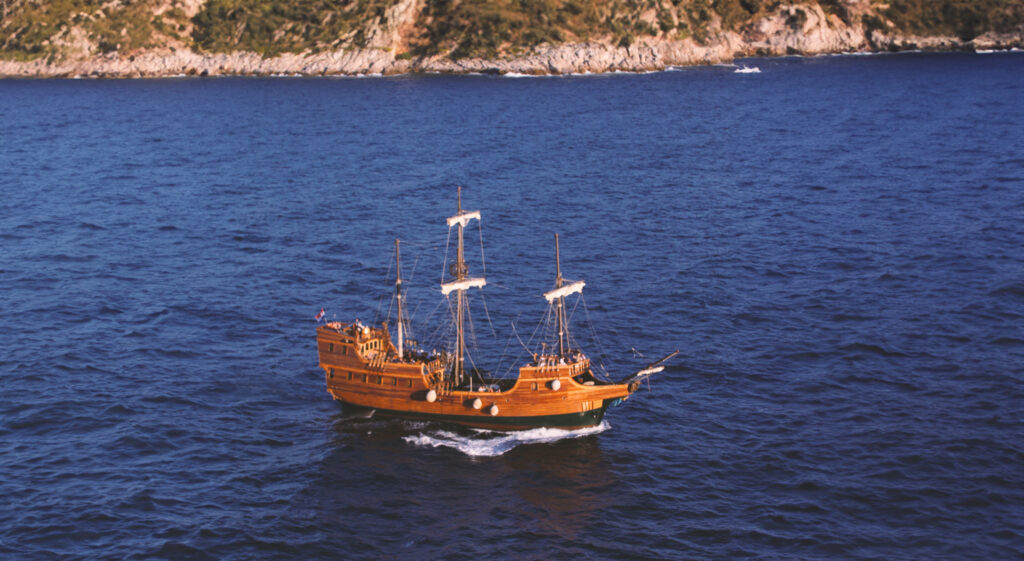
Escape to the Idyllic Islands Near… Dubrovnik Just get on a boat and go! Lokrum Island Mljet National Park Elaphiti Islands Dubrovnik is famous for its stunning Old Town and medieval walls along the Adriatic coast. However, the islands just offshore provide an opportunity to truly get away from it all and experience a slower, more relaxing pace of life. From the chic beach clubs of Lokrum to the unspoiled nature of Mljet National Park, the islands near Dubrovnik offer something for everyone. Here are some of the top island destinations to explore on a day trip or overnight excursion from Dubrovnik. Lokrum Island A quick 10-15 minute ferry ride from Dubrovnik’s Old Harbor brings you to the leafy oasis of Lokrum. This petite island is home to a Benedictine monastery, botanical gardens, several small beaches, and beaches clubs like Lacroma Beach and Portun Bay. Hike the island’s trails, visit the ruins of the old monastery, or just spend a lazy day swimming and sunbathing at one of the beach clubs. Ferries depart regularly from early morning until late evening. Mljet National Park About two hours from Dubrovnik by ferry lies Mljet, one of Croatia’s most stunning national parks. The western part of the island contains two lakes nestled inside the park – Veliko Jezero (Big Lake) and Malo Jezero (Small Lake). Take a boat across to the Islet of St. Mary, which has a 12th century Benedictine monastery in the middle of the Small Lake. Hike or bike around the lakes, explore the pine forests, and discover hidden coves and saltwater lakes along the coast. Stay overnight in one of the park’s hotels to fit everything in. Elaphiti Islands This small archipelago just northwest of Dubrovnik makes an easy day trip or overnight stay. The three largest islands are Koločep, Lopud and Šipan. Lopud is probably the favorite for a beach getaway, with sandy Sunj Beach being one of the nicest in the area. Šipan is quieter and more traditional, with historic monasteries, churches and villages inland. Take a ferry from Dubrovnik and spend a day hopping between the islands and their charming harbors and coves. Conclusion Whether you’re looking for beaches, nature, history or just tranquility, the islands near Dubrovnik provide the perfect escape from the crowds. Book a tour with a local operator or explore on your own by ferry to experience this beautiful island chain in the Adriatic.
Two Week Itinerary in…Vietnam
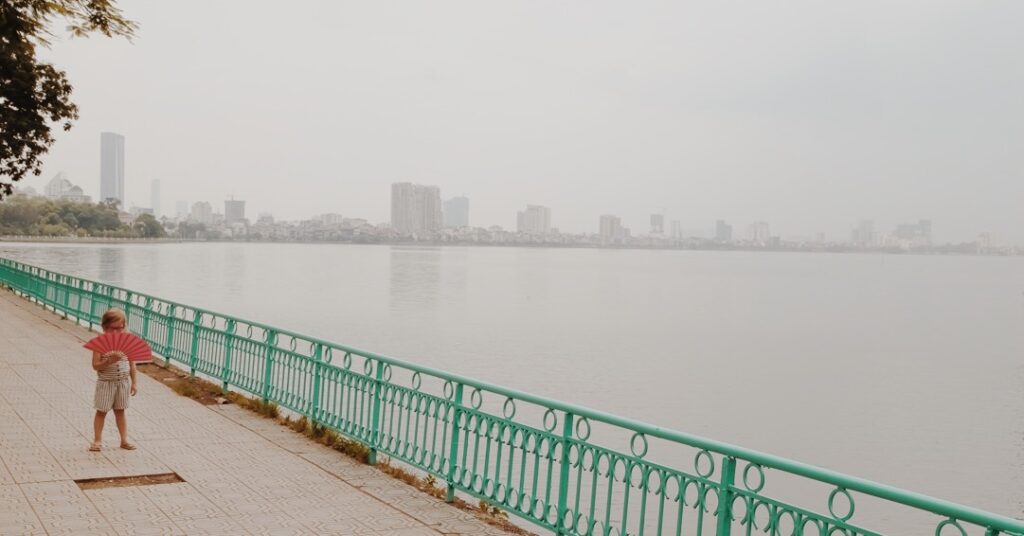
The Ultimate Itinerary… Vietnam 2 Weeks in Vietnam (Or How to Cram an Entire Country Into Your Scant Vacation Days) Hanoi Halong Bay Hue Hoi An Ho Chi Minh City Perfect Two Week Vietnam Itinerary Day 1-3 Hanoi Where Chaos Meets Charm Welcome to Hanoi, the capital city where the honking never stops and crossing the street is an extreme sport. Spend your first day getting lost in the labyrinthine Old Quarter, where you’ll find everything from knockoff North Face jackets to restaurants so tiny you’ll wonder if you’ve stumbled into a dollhouse. Must-do activities: Visit Ho Chi Minh Mausoleum (because nothing says “vacation” like viewing a preserved communist leader) Explore Hoan Kiem Lake and Ngoc Son Temple Take a street food tour (pro tip: if you can’t identify it, it’s probably delicious) Day 4-5 Halong Bay Limestone Karsts and Junk Boats Time to hop on a bus and head to the UNESCO World Heritage site of Halong Bay. Marvel at the thousands of limestone islands jutting out of the emerald waters while you cruise around on a traditional junk boat. Just don’t expect to get any peace and quiet – turns out, everyone else had the same idea. Activities: Kayak through hidden caves Visit floating villages Attempt tai chi on the deck at sunrise (warning: may result in unintentional comedy) Day 6-7 Hue Imperial City and Royal Tombs Next stop: Hue, the former imperial capital. Here, you’ll get your fill of history, architecture, and enough temples to make your head spin. Don’t miss: The Imperial Citadel (prepare for some serious step-counting) Thien Mu Pagoda A boat trip down the Perfume River (spoiler alert: it doesn’t actually smell like perfume) Day 8-10 Hoi An Lanterns, Tailors, and Charm Overload Welcome to Hoi An, the town that Instagram dreams are made of. Prepare yourself for an onslaught of colorful lanterns, tailor shops, and more tourists than you can shake a chopstick at. To-do list: Get clothes custom-made (because who doesn’t need a silk kimono?) Take a cooking class (and subsequently ruin all future Vietnamese takeout for yourself) Bike through the rice paddies to An Bang Beach Day 11-13 Ho Chi Minh City (Saigon) Sensory Overload Central Your final stop is Ho Chi Minh City, where the past and present collide in a whirlwind of motorbikes, colonial architecture, and more coffee shops than you can count. Must-see attractions: War Remnants Museum (a sobering but essential visit) Cu Chi Tunnels (claustrophobics, you’ve been warned) Ben Thanh Market (haggle like your life depends on it) Day 14 Depart with a Heavy Heart (and Heavier Luggage) As you board your flight home, reflect on the whirlwind adventure you’ve just had. Your bank account may be lighter, but your heart (and stomach) are undoubtedly full.
Best Time to Visit…Norway
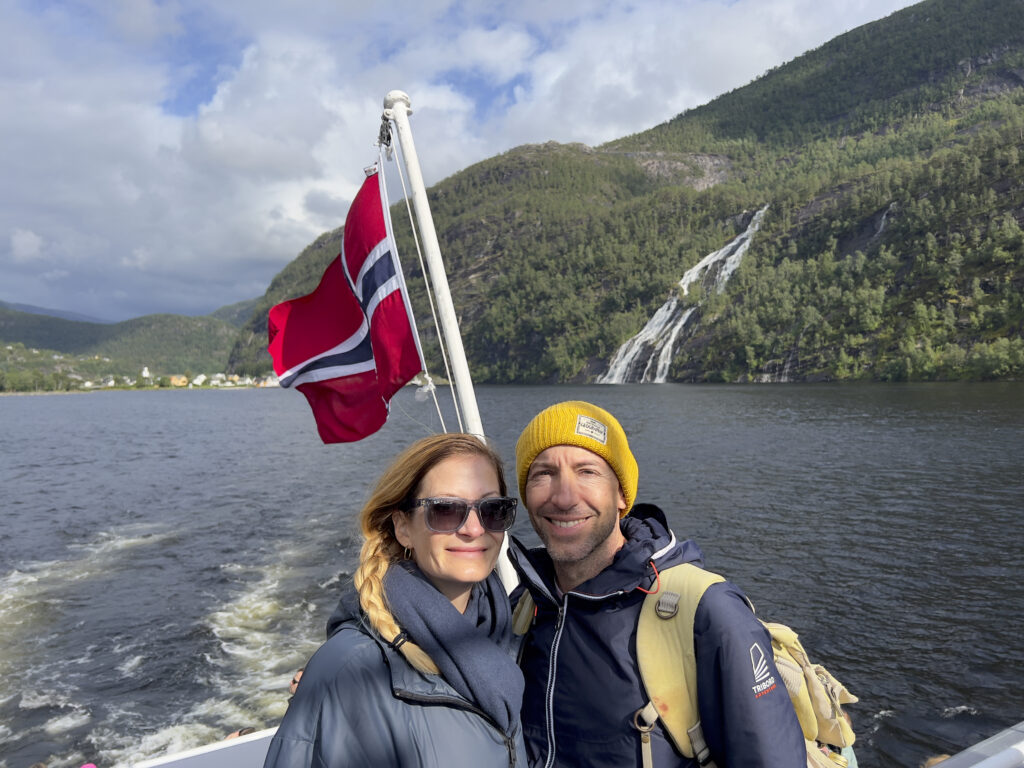
Best Time to Visit… Norway A Month-by-Month Guide (Or How to Choose Between Eternal Darkness and Blinding Midnight Sun) January-February March-April May-June July-August September-October November-December January-February Peak Winter Wonderland Pros: Northern Lights, winter sports, magical snowy landscapes Cons: It’s dark. Like, really dark. And cold. Really cold. Verdict: Great for aurora chasers and ski enthusiasts, not so much for sun lovers. January: Deep Freeze Perfect for: Northern Lights hunting, dog sledding, questioning your life choices. Watch out for: Frostbite, vitamin D deficiency, and the overwhelming urge to hibernate. February: Still Pretty Freezing Perfect for: Winter festivals, ice fishing, pretending you’re in “Frozen”. Watch out for: Slippery sidewalks and the “why did I come here in winter?” blues. March-April Spring Awakening Pros: Longer days, fewer tourists, still some snow for winter activities Cons: Muddy and wet as things start to thaw. Verdict: Good for budget travelers who don’t mind a bit of mud. March: Spring Tries to Spring Perfect for: Catching the last of the ski season, watching nature wake up. Watch out for: Unpredictable weather swings and surprise snowstorms. April: Easter Egg Hunts in the Snow Perfect for: Spring skiing, watching confused flowers try to bloom. Watch out for: Muddy trails and the last desperate attempts of winter to hang on. May-June Late Spring/Early Summer Bliss Pros: Mild weather, blooming nature, start of midnight sun in the north Cons: Some attractions might not be fully open yet Verdict: Excellent time for hiking and outdoor activities May: Norway Day and Spring Fever Perfect for: National day celebrations, hiking without freezing. Watch out for: Locals emerging from winter hibernation, possibly overly excited. June: Midnight Sun Madness Perfect for: 24-hour outdoor adventures, forgetting what sleep is. Watch out for: Midnight sun-induced insomnia and sunburn at 11 PM. July-August Peak Summer Season Pros: Warmest weather, midnight sun, all attractions open Cons: Crowds, high prices, and did we mention crowds? Verdict: Perfect for outdoor adventures and festivals, but bring your wallet and patience July: Peak Tourist Invasion Perfect for: Fjord cruises, outdoor festivals, maxing out your credit card. Watch out for: Crowds, high prices, and more crowds. August: Last Chance Summer Perfect for: Highland hikes, beach days (yes, really), soaking up the last of the midnight sun. Watch out for: Sudden realization that summer is ending, panic booking of last-minute trips. September-October Golden Autumn Pros: Fall colors, fewer tourists, still decent weather Cons: Shorter days, some attractions start to close Verdict: Great for photography and enjoying nature without the summer crowds September: Golden Hour, All Day Perfect for: Fall foliage, fewer tourists, cozy cabin retreats. Watch out for: Rapidly shortening days and the return of rain. October: Autumn’s Last Hurrah Perfect for: Northern Lights without freezing, storm watching on the coast. Watch out for: Closing mountain roads and a creeping sense of impending winter. November-December Early Winter Magic Pros: Christmas markets, cozy “kos” atmosphere, start of Northern Lights season Cons: Short days, cold weather, some attractions closed Verdict: Good for Christmas enthusiasts and early birds to the aurora season November: The Darkness Returns Perfect for: Cozying up in cafes, early Christmas markets, embracing your inner Viking. Watch out for: Rapidly disappearing daylight and the urge to buy ALL the candles. December: Winter Wonderland (If You’re Lucky) Perfect for: Christmas markets, aurora hunting, pretending you’re in a snow globe. Watch out for: Potential lack of snow in the cities (climate change is real, folks). Remember, there’s no bad time to visit Norway, just varying degrees of daylight, temperature, and tourist density. Choose wisely, pack layers, and always bring a sense of humor (and a backup credit card).
The Ultimate Thailand Itinerary: 2 Weeks in the Land of Smiles
The Ultimate Itinerary for… Thailand 2 Weeks in the Land of Smiles Bangkok Chiang Mai Krabi Koh Samui Welcome to Thailand, where the smiles are as abundant as the pad thai, and the beaches are more photogenic than your entire Instagram feed combined. Buckle up, buttercup – we’re about to embark on a whirlwind tour of the Land of Smiles that’ll leave you breathless, sunburned, and possibly sporting a questionable bamboo tattoo. Day 1-3 Bangkok City of Angels (and Endless Traffic) Sawadee ka! Welcome to Bangkok, where the streets are hot, the food is spicy, and the traffic is… well, let’s just say you might want to consider walking. Spend your first day getting lost in the labyrinthine streets of Chinatown, where you’ll find everything from gold shops to durian vendors (hold your nose, folks). Must-do activities: Visit the Grand Palace (because nothing says “vacation” like sweating through your clothes in a temple) Explore Wat Pho and the Reclining Buddha (it’s big, it’s gold, it’s… reclining) Take a sunset river cruise on the Chao Phraya (just don’t fall in – trust me on this one) Day 4-6 Chiang Mai The Rose of the North Time to head north to Chiang Mai, where the pace slows down, the air cools off (slightly), and you can pretend you’re not a tourist for approximately 5 minutes. Activities: Visit an elephant sanctuary Take a Thai cooking class (spoiler alert: everything involves fish sauce) Explore the Sunday Night Market (prepare to buy things you absolutely don’t need) Day 7-9 Krabi Limestone Karsts and Island Hopping Next stop: Krabi, where the beaches are pristine, the limestone cliffs are jaw-dropping, and you’ll finally get those Instagram shots you’ve been dreaming of. Don’t miss: Island hopping to Koh Phi Phi (yes, it’s touristy, but it’s touristy for a reason) Rock climbing at Railay Beach (harness up and pray you didn’t skip arm day) Kayaking through mangrove forests (watch out for monkeys – they’re cute but crafty) Day 10-12 Koh Samui Island Paradise (with a Side of Luxury) Welcome to Koh Samui, where coconut groves meet luxury resorts, and you can finally justify that overpriced cocktail on the beach. To-do list: Visit the Big Buddha statue (it’s big, it’s Buddha – what more do you need?) Relax on Chaweng Beach (or party, if that’s your thing) Take a day trip to Ang Thong Marine Park (it’s like being in a postcard, but with more sweat) Day 13-14 Bangkok One Last Hurrah Back to where it all began. Spend your last day shopping till you drop at Chatuchak Weekend Market, indulging in a Thai massage (prepare for contortions you didn’t know were possible), and toasting to your adventure at a rooftop bar. As you board your flight home, reflect on the whirlwind adventure you’ve just had. Your taste buds may never be the same, your skin might be a shade darker, and your heart… well, it’s probably already planning your next trip back.
How Much Does it Cost to Travel in…Norway
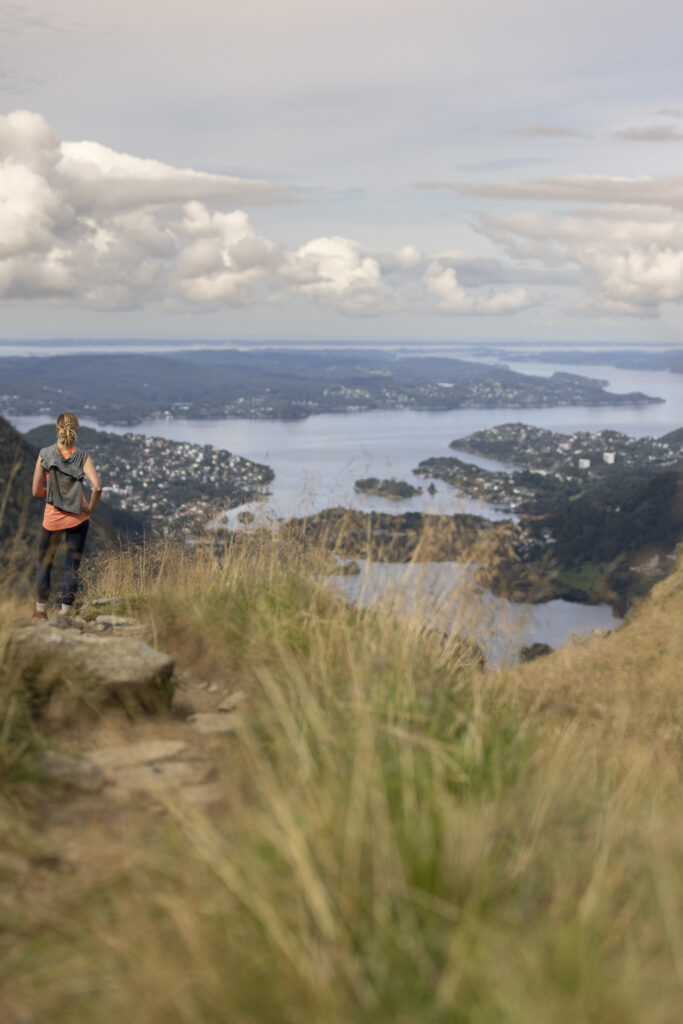
How Much Does it Cost to Travel in… Norway A Detailed Budget Breakdown (Or How to Remortgage Your House for a Norwegian Vacation) Accommodation Food and Drink Transportation Activities Sample Daily Budgets Accommodation: Budget: 300-600 NOK ($35-70) per night (hostel dorms or camping) Mid-range: 800-1500 NOK ($95-175) per night (budget hotels or Airbnb) Luxury: 2000+ NOK ($235+) per night (high-end hotels or swanky cabins) Pro tip: Consider staying at a self-catering cabin or Airbnb. Cooking your own meals might just save you from bankruptcy. Food and Drink: Fast food meal: 100-150 NOK ($12-18) Mid-range restaurant meal: 250-400 NOK ($30-47) per person Beer at a bar: 80-100 NOK ($9-12) Coffee: 30-50 NOK ($3.50-6) Fun fact: The “Matpakke” (packed lunch) is a Norwegian institution. Embrace it, unless you want to spend your entire travel budget on lunch. Transportation: Single bus/tram ticket in Oslo: 39 NOK ($4.60) Oslo-Bergen train: 700-1000 NOK ($82-118) Domestic flight: 500-1500 NOK ($59-176) Car rental: 500-1000 NOK ($59-118) per day Warning: Gas prices might make you weep. Consider an electric car rental – Norway’s got more charging stations than fjords. Activities: Museum entrance: 100-150 NOK ($12-18) Fjord cruise: 500-800 NOK ($59-94) Northern Lights tour: 1000-1500 NOK ($118-176) Ski pass (day): 400-600 NOK ($47-70) Remember: Many natural attractions are free, thanks to allemannsretten (right to roam). Your wallet will thank you. Sample Daily Budgets: Shoestring: 600-800 NOK ($70-95) per day Mid-range: 1000-1500 NOK ($118-176) per day Luxury: 2500+ NOK ($294+) per day Note: These budgets don’t include international flights or your inevitable impulse purchase of a $200 Norwegian sweater. Unexpected Expenses: Tolls: Norway loves its road tolls. Budget extra if you’re driving. Weather gear: Waterproof everything. Seriously. Alcohol: Start practicing your home brewing skills now. Remember, your budget in Norway can vary wildly depending on your travel style. You could spend a fortune on hotels and restaurants, or embrace the great outdoors and live off hotdogs from gas stations (a Norwegian delicacy, believe it or not). Just don’t blame us when you’re eating instant noodles for a month after your trip because you couldn’t resist that reindeer safari. Norway: come for the fjords, stay because you can’t afford the flight home.
Your Quick Guide to…Madaba
Your Quick Guide to… Madaba Madaba: Mosaics, Memories, and Middle Eastern Magic Mosaic Map Exploring the City Dining and Accommodations Madaba is a place that perfectly encapsulates the rich history and cultural tapestry of Jordan. This unassuming city, located just a short drive from Amman, is famous for its stunning Byzantine-era mosaics and its laid-back, welcoming atmosphere. The Madaba Mosaic Map: A Masterpiece of Ancient Cartography The crown jewel of Madaba is undoubtedly the Madaba Mosaic Map, a 6th-century masterpiece that covers the floor of the Greek Orthodox Church of St. George. This intricate map, made up of over 2 million tiny stone pieces, depicts the Middle East from Lebanon to Egypt, with a detailed representation of Jerusalem at its center. As you stand before this ancient marvel, trying to decipher the faded labels and intricate details, you can’t help but feel a sense of awe at the skill and dedication of the artisans who created it. And if you’re traveling with kids, watching them play “I Spy” with the tiny figures and buildings on the map is a surefire way to keep them entertained (and educated) for at least a few minutes. Exploring the City: Mosaics, Markets, and More But the Mosaic Map is just the beginning of Madaba’s charms. The city is home to a plethora of other ancient mosaics, scattered throughout its churches, museums, and even private homes. Take a stroll through the Archaeological Park, where you can see a stunning collection of mosaics from the 5th to the 7th centuries, including the famous “Hippolytus Hall,” a mosaic depicting scenes from Greek mythology. If you need a break from all the history and culture, head to the bustling streets of downtown Madaba, where you’ll find a lively market selling everything from fresh produce to handmade crafts. Haggling is expected, so brush up on your bargaining skills (or just let your kids loose on the unsuspecting vendors – they’ll either score some great deals or cause an international incident, but either way, it’ll be entertaining). dining and accommodations:Middle Eastern Hospitality at Its Finest When it comes to food, Madaba does not disappoint. The city is home to a variety of restaurants serving up delicious Middle Eastern cuisine, from succulent grilled meats to fresh, flavorful salads. One local favorite is Haret Jdoudna, a charming restaurant set in a restored Ottoman-era house, where you can dine on traditional dishes like mansaf (lamb cooked in yogurt sauce) and musakhan (roasted chicken with onions and sumac) while sitting in a lovely courtyard surrounded by mosaics (because in Madaba, even the restaurants have mosaics). For accommodations, Madaba offers a range of options to suit every budget and taste. If you’re looking for a bit of luxury, the Mosaic City Hotel is a top choice, with its elegant rooms, outdoor pool, and prime location just steps from the Mosaic Map. For a more authentic experience, consider staying in one of the city’s many family-run guesthouses, where you’ll be treated to warm hospitality, home-cooked meals, and insider tips on exploring the city. So, there you have it – a whirlwind tour of Madaba, the mosaic capital of Jordan. Whether you’re a history buff, a culture vulture, or just a family looking for a unique and engaging travel experience, Madaba has something to offer. Just remember to pack your sense of humor, your haggling skills, and your appreciation for the artistry and ingenuity of ancient civilizations. Oh, and maybe a few extra snacks for the kids – because let’s face it, even the most impressive mosaic can only hold their attention for so long.
Top 5 Questions Travelers Ask About…Vietnam
Top 5 Questions Travelers Ask About… Vietnam Your top questions answered. Do I need a visa to travel to Vietnam? What’s the best time to visit Vietnam? Is it safe to travel in Vietnam? What are the must-visit places in Vietnam? How much money do I need for a trip to Vietnam? Are you planning a trip to Vietnam? You’re not alone! This beautiful Southeast Asian country has become an increasingly popular destination for travelers from around the world. As a travel blogger, I’ve noticed that certain questions come up time and time again when people are researching their Vietnamese adventure. To help you prepare for your trip, I’ve compiled the top 5 most searched questions about traveling in Vietnam. 1. Do I need a visa to travel to Vietnam? This is by far the most common question travelers ask, and for good reason! The answer depends on your nationality and the length of your stay. Many countries, including the United States, Canada, and most European nations, require a visa to enter Vietnam. However, some countries have visa exemption agreements for stays up to 15 or 30 days. For most travelers, the easiest option is to apply for an e-visa online before your trip. This process is typically quick and straightforward, allowing you to enter Vietnam for up to 30 days. Always check the official Vietnamese government website for the most up-to-date information on visa requirements for your specific situation. This can be a bit daunting. A friend of our misspelled a name on the application and it put her back a day. And, personally, we were nervous about getting ours while waiting in the airport. The officals were not very pleasant and we were the last people from the plane to get ours, much to our relief. 2. What’s the best time to visit Vietnam? Vietnam’s climate varies significantly from north to south, making this question a bit tricky to answer. In general, the best time to visit Vietnam is during the dry season, which typically runs from November to April. However, this can vary depending on which part of the country you’re planning to visit. Northern Vietnam (including Hanoi and Halong Bay) is best visited from October to December when the weather is mild and dry. Central Vietnam (including Hoi An and Hue) is most pleasant from January to August. Southern Vietnam (including Ho Chi Minh City and the Mekong Delta) is great to visit year-round, but the dry season from December to April is particularly nice. 3. Is it safe to travel in Vietnam? Vietnam is generally considered a safe country for travelers. Like any destination, it’s important to exercise common sense and take basic precautions. Petty theft can occur in touristy areas, so keep an eye on your belongings and be aware of your surroundings. The biggest safety concerns for most travelers are related to traffic. Vietnamese cities, particularly Hanoi and Ho Chi Minh City, are known for their chaotic traffic with countless motorbikes zipping around. Be extra cautious when crossing streets and consider taking a guided tour if you’re not comfortable navigating on your own. I almost got plowed once. The key is to not walk too fast, not walk too slow, and be very predictable. Oh, and beware of jellyfish. 4. What are the must-visit places in Vietnam? Vietnam offers a diverse range of attractions, from bustling cities to serene landscapes. While everyone’s preferences differ, here are some of the most popular destinations: Hanoi: The capital city and a personal favorite, known for its Old Quarter and rich history Halong Bay: A UNESCO World Heritage site famous for its limestone karsts and emerald waters Hoi An: A charming ancient town known for its well-preserved architecture and lantern-lit streets Ho Chi Minh City (Saigon): The largest city in Vietnam, offering a mix of history and modernity Sapa: A mountain town known for its terraced rice fields and ethnic minority villages Mekong Delta: A vast network of rivers and islands, perfect for boat tours and experiencing rural life 5. How much money do I need for a trip to Vietnam? Vietnam is generally considered an affordable destination for travelers, but the amount you’ll need depends on your travel style and the length of your trip. Budget travelers can get by on as little as $20-30 per day, while mid-range travelers might spend $50-100 per day. Accommodation costs vary widely, from budget hostels at $5-10 per night to luxury resorts at $100+ per night. Food is generally inexpensive, with street food meals costing as little as $1-3 and restaurant meals ranging from $5-15. Transportation costs are also reasonable, with domestic flights between major cities costing around $30-50 one-way. Long-distance buses and trains are even cheaper options for budget travelers. Remember to factor in costs for activities, souvenirs, and any visa fees when budgeting for your trip. By addressing these top 5 questions, you’ll be well on your way to planning an amazing trip to Vietnam. Remember, every traveler’s experience is unique, so don’t be afraid to venture off the beaten path and create your own Vietnamese adventure!

